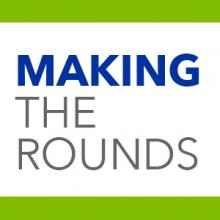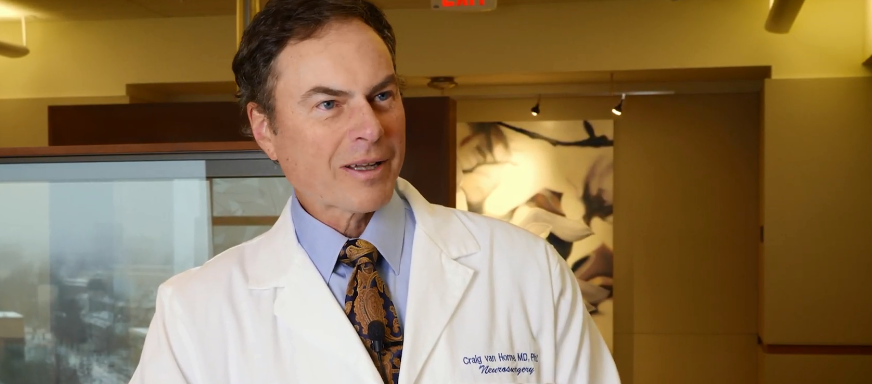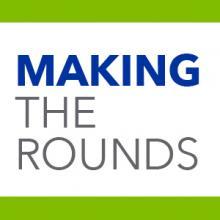
- Chairman, Department of Neurosurgery
- Co-director, Brain Restoration Center
- Virginia T. Barrow Endowed Chair
- Chairman, Department of Neurosurgery
- Co-director, Brain Restoration Center
- Virginia T. Barrow Endowed Chair

- Chairman, Department of Neurosurgery
- Co-director, Brain Restoration Center
- Virginia T. Barrow Endowed Chair
- Chairman, Department of Neurosurgery
- Co-director, Brain Restoration Center
- Virginia T. Barrow Endowed Chair
Dr. Craig van Horne wears many hats – but neurosurgery is still his passion


In our latest Making the Rounds interview, Dr. Craig van Horne – a neurosurgeon and researcher with the Kentucky Neuroscience Institute – talks about his path and his passions. A leader in the treatment of movement disorders, he focuses his research on improving the quality of life for people with Parkinson’s disease. He and his team are pioneering a surgical approach to help Parkinson’s patients known as DBS Plus in a current clinical study.
How did you choose your specialty?
From a young age I found that I was naturally interested in science and biology. No one else in my family is in medicine and no one was particularly interested in science. In high school, my interest deepened, and I really fell in love with neuroscience and the brain. In college, I was a biology major and did my thesis work on nerve grafting in goldfish. I worked with a really great professor and mentor who was conducting research on brain regeneration in goldfish at the time.
After college, I knew I wanted to continue to study the brain but also wanted to apply that knowledge to people and patients. After completing a combined MD-PhD program at the University of Colorado, I decided to pursue a career in neurosurgery and subspecialize in deep brain stimulation and brain restoration.
What was your first paying job?
Although my first job was mowing lawns and doing yard work in the neighborhood, my first most formative job was working as a caddie at the country club across town as a freshman in high school. The work was not steady or guaranteed. It was possible to ride all the way there early in the morning to find that the available opportunities had been filled and that there was no work for the day.
But I also learned that this work was a dynamic process. The boss in charge would say, “Everything is filled, but something could open up. I can’t guarantee anything!” What I learned is that if I stuck around, an opportunity would often open up, and I would be able to take on a player, or even better, two players for 18 holes. What I also learned is that the boss also learned which caddies were willing to wait around for work and which caddies would not be willing to wait. Over the summer, being a patient and hungry caddie, I was more likely to get routine assignments and was frequently selected to caddie for special guests. Although I didn’t fully understand it at the time, this was a very important lesson in persistence and the importance of personal interaction.
How do you spend time outside of work?
I really enjoy being at home with my wife and young son. We have about 6 acres and a lot of trees. We work in the yard together. We mow the yard ourselves, trim all the trees, plant and maintain a nice vegetable and flower garden, and I love that.
I also work creatively in the visual arts, including oil and acrylic painting as well as photography. A number of pieces are on display on the medical campus. A series of photographic works are along a hallway in the Kentucky Clinic building, and several photographs are displayed at Good Samaritan and at the Turfland offices.
Best thing about working at UK HealthCare?
It’s the working environment. It provides opportunity, and it is supportive. At many other centers, it’s minimally supportive – they push you to support yourself, and it is competitive and not cooperative.
Watch our interview with Dr. Craig van Horne to learn why he's so passionate about medicine and what's on the horizon for new Parkinson's treatments.




